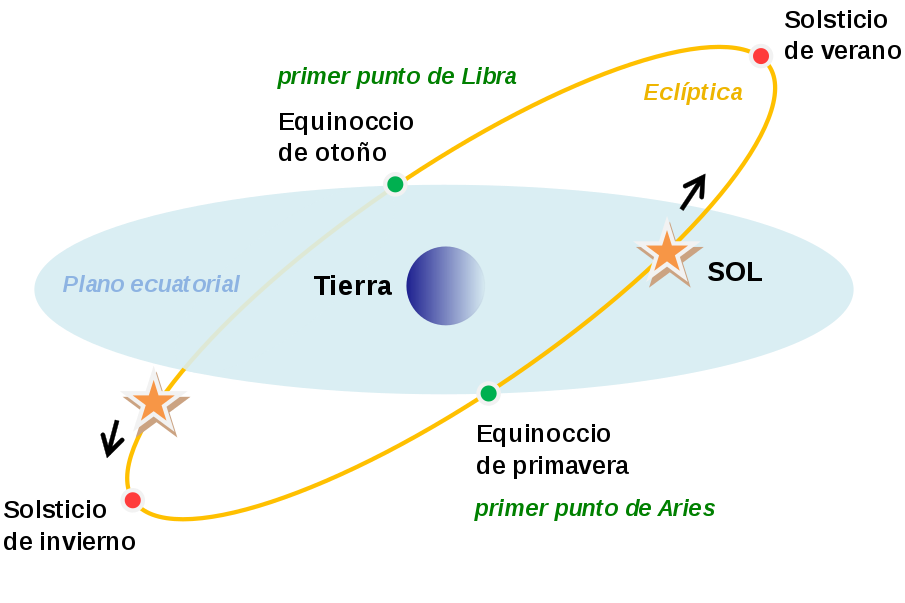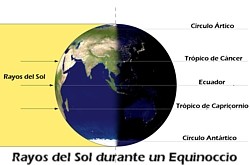Aries Point (or vernal equinox) and Libra Point (or autumnal equinox)
He Aries Point It is the one in which the Sun crosses from the Southern to the Northern hemisphere, which occurs on ~March 21 (spring equinox in the North, autumn equinox in the South). It has zero Declination and Right Ascension 0h (the RA and the zodiacal constellations begin to be counted); However, due to the precession of the equinoxes, this point has slowly receded since it was calculated and is now in the constellation of Pisces (that is, it should be called Pisces Point).

He Libra Point It is diametrically opposite that of Aries, and indicates the point at which the Sun crosses from the Northern to the Southern hemisphere, which occurs on ~September 21 (spring equinox in the South, autumn equinox in the North). It has zero declination and 12h Right Ascension; Due to the precession of the equinoxes, this point has also slowly receded since it was calculated and is now located in the constellation of Virgo (that is, it should be called Virgo Point).


Equinoxes
They are each of the two points on the celestial sphere where the ecliptic cuts the celestial equator (equivalent to the Points of Aries and Libra). The equinoxes occur when the Sun is located in the plane of the Earth's equator, being located at the zenith, and therefore impacting its rays perpendicularly. This means that at the equinoxes, night and day have the same length throughout the world (equinox in Latin means “same night”“).
Solstices
They are each of the two points of the year in which the Sun reaches its maximum southern or boreal position. That is, on the summer solstice of the Southern Hemisphere the Sun reaches its zenith at noon over the Tropic of Capricorn, and on the winter solstice it reaches its zenith on the Tropic of Cancer, and vice versa; This means that for moments, in places located in latitudes of the tropics, the rays arrive perpendicular and the objects do not cast shadows, giving the impression that the Sun has “stopped” (solstice in Latin means (“still sun“).


